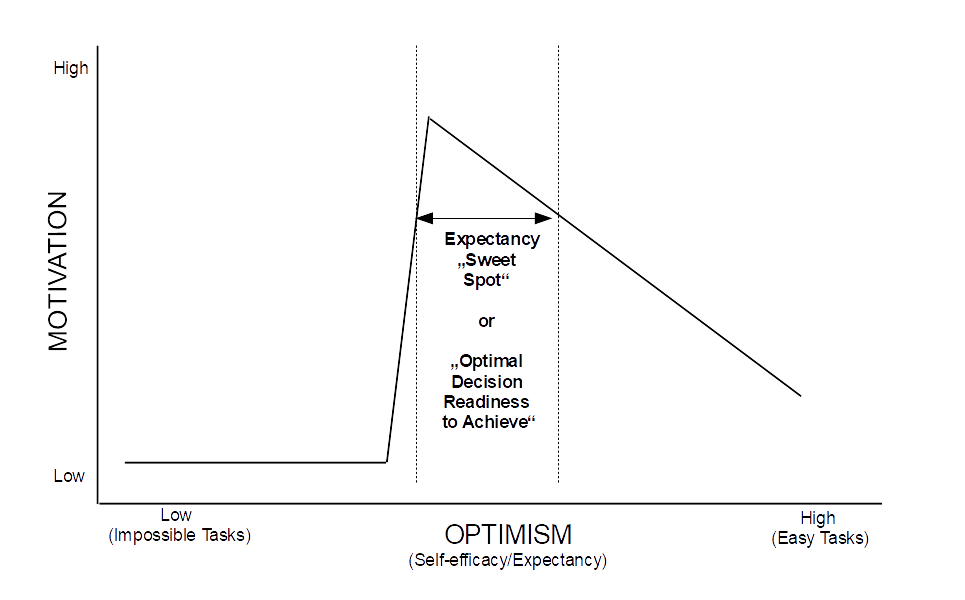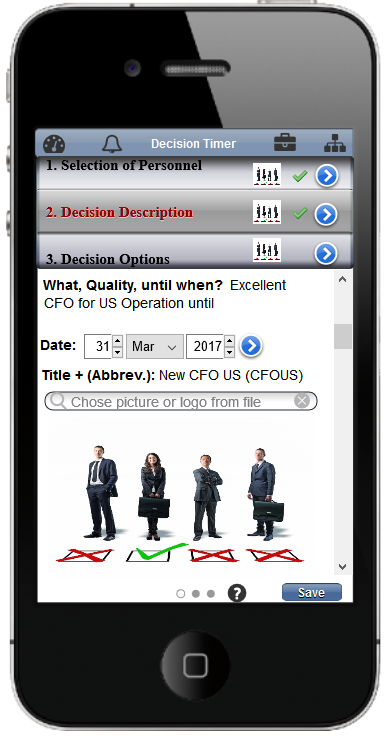The quote “A goal without a plan is just a wish!” attributed to the French writer Antoine de Saint-Exupéry, beautifully characterizes our attitude and relation to goals and proactive decision making in many instances. It is one thing to formulate and deal with decisions and goals more in the form of a wish, and another, to actually commit to and realize them in practice, by setting up a plan and applying a proper process. Decision Timing or Proactive Decision Development is such a process and system that transforms the intention of proactive decision making into reality.

Decision Timing: How-to apply proactive decision making in reality (Picture: Rock and Wasp)
Before I turn to proactive decision making and decision timing in particular, let me consider the general meaning and relevance of proactivity first.
The meaning of proactivity
The word pro-active is a centaur word, (like “bi-cycle”), combining a Greek prefix (“pro-” meaning “before”) with a Latin root, “active”. (The Latin prefix “pre-” (“before”) could have been used instead, but perhaps it would have been confused with “re-active”). (Source Wikipedia)
Originally used in experimental psychology in the 1930s, proactive had a different meaning then, limited and only related to a particular phenomenon of inhibition.
The meaning of proactive as we apply and understand it today, is largely influenced by the Austrian existential neuropsychiatrist Dr. Viktor Frankl. He used the word in his famous book Man’s Search for Meaning (published 1946) to describe a person who took responsibility for his or her life, rather than looking for causes in outside circumstances or other people. His view is in large based on his personal experience and observations of life as an Auschwitz concentration camp inmate during World War II. In his use of the word, Frankl stressed the importance of courage, perseverance, individual responsibility and awareness of the existence of choices, regardless of the situation or context, may they be as adverse, as being an inmate in a concentration camp.
The use and relevance of proactivity in other contexts
Stephen Covey expands and builds on the concept of proactivity in 1988 with his bestseller The 7 Habits of Highly Effective People, which sold over 25 million copies and positively influenced and inspired many people. Covey lists proactivity as the first and most important habit. He argues, in line with Frankl, that rather than passively sit around, wait, worry and complain, highly effective people become active and enlarge their circle of influence to work on the aspects that they can control and advance rather than consider themselves victims of circumstance.
Proactive decision making today
In contrast to the above definitions of proactivity or proactive behavior, proactive decision making, at this moment in time, is still rather an expert or specialist discipline, carried out only by a very small fraction of people. Essentially process, deal or product focused rather than people, proactive decision making will, in practice, only be found in areas like reliability engineering, maintenance management, risk management, life insurance or health management. The general public does not use or apply proactive decision making or proactive decision development yet. There are many reasons for this like general procrastination, lack of self-continuity, general distractions, depleted willpower, lack of proper goal setting, poor time-management, valuing immediate consumption over delayed consumption etc. (for a detailed discussion please refer to my book Decision Timing: More Awareness, New Insights, Smarter). The point that I want to get across here is, apart from the reasons listed above, there were no tools and processes available up to now that the general public was aware of and could use to support and assist the application of proactive decision making. To underline this state of affairs, while there is of course plenty of good intention to apply proactive decision making in efforts like New Year´s resolutions, in practice these projects and initiatives largely fail because of a lack of “HOWTO”.
Decision Timing
As indicated above Decision Timing is a process and system that transforms the intention of proactive decision making into reality. Think about it: How about working on and improving your life not only once a year but much more frequently and on a regular basis? How about applying this process not only to New Year´s resolutions but to all important and irrevocable private and business decisions?
It is easy and you can do it with Decision Timing or Proactive Decision Development!
In a nutshell, Decision Timing is a system of methods & tools that supports the decision maker in taking important and irrevocable decisions not only in a proactive way, but also in a less biased, more creative and more sustainable way. While the focus of this article is deliberately only on the aspect of proactivity in Decision Timing, I also like to mention the other aspects of Decision Timing described in more detail in other articles (see for example the article on the aspect of more creativity, with others following).
Back to proactivity and Decision Timing. I like you to consider two aspects:
a) #GoalSetting
Every decision is ideally defined by a goal and associated objectives. In reference to Stephen Covey with the second habit of highly effective people in mind one could say: “Begin with the End in Mind or Envision what you want in the future so you can work and plan towards it.”
Choosing a goal seems quite easy, but what if the goal is set too high or too low?
The “Self-efficacy model” presented below (and discussed in my book and articles) gives us a very clear indication. It shows what happens when a goal is set too high, i.e. when a task is chosen that is impossible to achieve (see left side of picture below). As a result the motivation will be very low. While the goal itself might seem very attractive as it is very difficult to achieve, in practice no real motivation and effort will result for the person choosing that goal. Procrastinators typically choose those difficult to impossible tasks resulting in no application and no progress.

Expectancy “Sweet Spot” in Nonmonotonic and Discontinuous Model of Self-efficacy (Picture: Felix Schürholz)
On the other end of the spectrum, we find the easy goals related to easy tasks (see above, right side of picture). While optimism and motivation to achieve those goals is higher compared to very difficult to impossible tasks, motivation is still relatively low as the goal is not judged to be very attractive.
As with most things, the optimum lies in the middle, represented by the Expectancy “Sweet Spot”. Optimism is set at a realistic level (not too high and not too low) and motivation is optimal, resulting in maximum effort to achieve that goal.
Having proactively set the appropriate and best fitting goal, how is the intention of trying to achieve that goal transformed into reality?
b) #DecisionTimer
“A goal without a plan is just a wish” as Antoine de Saint-Exupéry taught us. In other words, amongst other things, we need the firm commitment to act by (or until) a certain date, and/or during a defined period. In organizational terms, we set ourselves a deadline or milestones. In Decision Timing – Proactive Decision Development, you literally set yourself a timer just as you would when cooking an egg with an egg timer. The timer in Decision Timing can be an app and a dedicated tool like the Decision Timer (see below), or your watch or calendar.
This is basically it, to be able to start! Easy, isn´t it!
To put everything into perspective: a) Setting and committing to a certain date and b) Choosing your goal (or defining your decision) wisely, is just an introduction to cover proactivity. The process & methods of Decision Timing allow you and are set up to take you much further.
With Decision Timing you find an integrated process to achieve not only proactivity in decision making and decision development, but also “less bias”, “more creativity” and finally “more sustainability”. As indicated above, in the following weeks further articles will follow, on “less bias” (#Counter-Priming, #Awareness) and “more sustainability” (#DiaryProcess, #Balance&Control), with the articles on “more creativity” and “proactivity” now published.
Summary
If you are curious now, having learned about “proactivity” and “more creativity” in decision making, and you want to get started on Decision Timing right away, you can of course! Just purchase my book Decision Timing: More Awareness, New Insights, Smarter (Method & Tool assisted decision making) as an e-book or paperback on Amazon.
If you have any questions, I am happy to answer them.
Yours, Felix Schürholz
www.decisiontiming.com

5 thoughts on “Decision Timing: The “HOWTO” for proactive decision making”
Comments are closed.